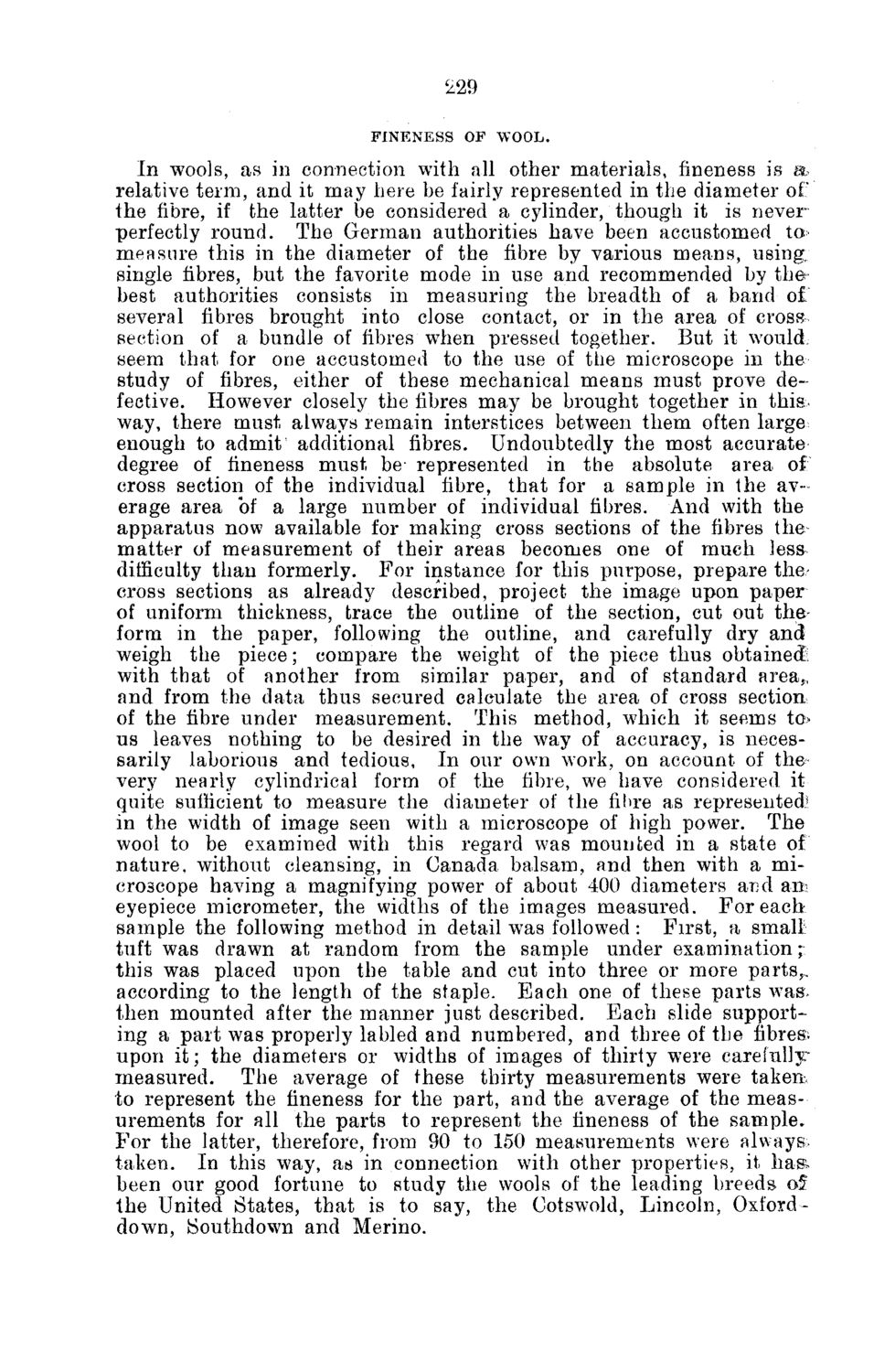| |
| |
Caption: Board of Trustees Minutes - 1886
This is a reduced-resolution page image for fast online browsing.

EXTRACTED TEXT FROM PAGE:
229 FINENESS OF WOOL. In wools, as in connection with all other materials, fineness is a> relative term, and it may here be fairly represented in the diameter o£ the fibre, if the latter be considered a cylinder, though it is never perfectly round. The German authorities have been accustomed to measure this in the diameter of the fibre by various means, using; single fibres, but the favorite mode in use and recommended by thebest authorities consists in measuring the breadth of a band of several fibres brought into close contact, or in the area of cross section of a bundle of fibres when pressed together. But it would: seem that for one accustomed to the use of the microscope in the study of fibres, either of these mechanical means must prove defective. However closely the fibres may be brought together in this, way, there must always remain interstices between them often large enough to admit additional fibres. Undoubtedly the most accurate degree of fineness must be* represented in the absolute area of cross section of the individual fibre, that for a sample in the average area of a large number of individual fibres. And with the apparatus now available for making cross sections of the fibres the matter of measurement of their areas becomes one of much less ditficulty than formerly. For instance for this purpose, prepare the/ cross sections as already described, project the image upon paper of uniform thickness, trace the outline of the section, cut out the form in the paper, following the outline, and carefully dry and weigh the piece; compare the weight of the piece thus obtained with that of another from similar paper, and of standard area„ and from the data thus secured calculate the area of cross section of the fibre under measurement. This method, which it seems to> us leaves nothing to be desired in the way of accuracy, is necessarily laborious and tedious, In our own work, on account of the very nearly cylindrical form of the fibre, we have considered it quite sufficient to measure the diameter of the fibre as represented! in the width of image seen with a microscope of high power. The wool to be examined with this regard was mounted in a state of nature, without cleansing, in Canada balsam, and then with a microscope having a magnifying power of about 400 diameters and an: eyepiece micrometer, the widths of the images measured. For each sample the following method in detail was followed: First, a small tuft was drawn at random from the sample under examination;. this was placed upon the table and cut into three or more parts r . according to the length of the staple. Each one of these parts was> then mounted after the manner just described. Each slide supporting a part was properly labled and numbered, and three of the fibres^ upon it; the diameters or widths of images of thirty were carefully measured. The average of these thirty measurements were taken, to represent the fineness for the part, and the average of the measurements for all the parts to represent the fineness of the sample. For the latter, therefore, from 90 to 150 measurements were always, taken. In this way, as in connection with other properties, it has. been our good fortune to study the wools of the leading breeds of the United States, that is to say, the Cotswold, Lincoln, Oxforddown, Southdown and Merino.
| |